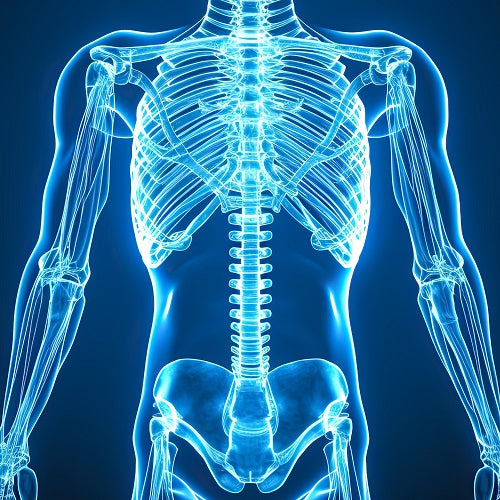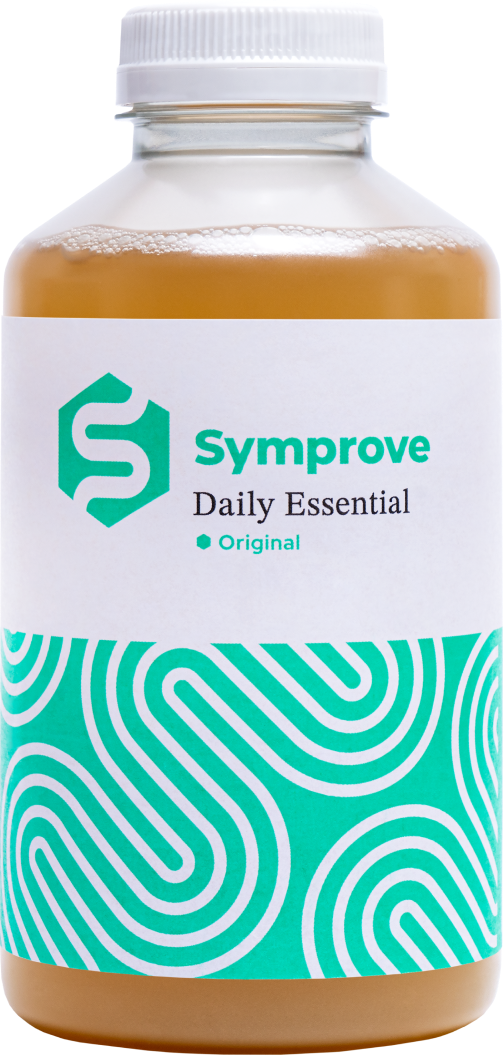Introduction
Osteoporosis is characterised by susceptibility to bone fragility and fracture. It has been described as a global health crisis (1, 2), accounting for more than 8.9 million fractures a year; or an osteoporotic fracture every 3 seconds (3). In the UK, approximately one in two women and one in five men over the age of 50 will have an osteoporotic fracture in their lifetime, increasing the risk of long-term functional impairment and mortality, as well as the wider health burden including lower quality of life and pressure on healthcare resources (4). Causes include low bone mass, accelerated bone loss, changes in hormone levels such as decreased oestrogen during the menopause, medications and diseases and lifestyle factors such as lack of exercise, excess alcohol intake and smoking (5).
It is well established that calcium and vitamin D are important to bone health throughout the life span. More recently, emerging research indicates that the gut microbiome may play a role in bone health (called the ‘gut-bone axis’), and could be used as a potential therapy (6).
How does the gut microbiome impact on bone health?
There are various mechanisms that have been proposed including the following:
- Regulation of nutrient absorption. Potentially through the effect of short chain fatty acids (SCFA’s) which appear to influence calcium signalling pathways and reduce pH values in the intestines, which in turn reduces calcium-phosphorus complexes and increases calcium absorption (7-9).
- The effect on the immune system. Dysbiosis can trigger inflammatory pathways in the gut, including the release of pro-inflammatory cytokines, resulting in a promotion of bone loss (10).
- Changes in intestinal permeability. Increased intestinal permeability could result in bacteria and their by-products moving to the bone and increasing and prolonging osteoclastogenesis* (6, 11, 12). The balance between osteoclastogenesis and osteogenesis is extremely important to bone health and any disruption of this can contribute to bone fragility (13).
- The action of SCFAs. These may have an impact on osteoclast and osteoblast activity and promote bone formation by promoting the secretion of insulin-like growth factor-1 (IGF-1) and glucagon-like peptide-1 (GLP-1) (14).
Can we manipulate the gut microbiome to improve bone health?
Probiotics:
A recent systematic review and meta-analysis that looked at 44 studies, including animal and human studies, found that probiotic supplementation may improve bone health (15). Of the seven human clinical trials included in the study, beneficial effects on various bone health markers were found including: an increase in calcium and 25-OH vitamin D levels and a decrease in parathyroid hormone, collagen type 1 cross-linked C-telopeptide, and bone-specific alkaline phosphatase. Several studies included in this review looked at bone mineral density (BMD) and found that there was an increase in hip BMD and reduced BMD in other areas. There, was, however, high heterogeneity between the studies used and a range of health conditions were included. Another randomised, double blind, placebo controlled trial of 234 women, not included in the review, looked at the effect of probiotic supplementation for a year during the early menopause (16). They found that probiotic supplementation resulted in no loss in BMD, whereas the placebo group experienced significant BMD loss in the lumbar spine. Further studies are needed that look at specific clinical conditions such as osteoporosis to identify the most effective strains and dosages of bacteria, for us to be able to give effective clinical advice.
Prebiotics:
Research has suggested that prebiotics may improve calcium balance and bone health (17). Animal and human studies that have looked at the supplementation of prebiotics during growth have shown an increase in calcium absorption(17, 18). Although the influence of prebiotics on calcium absorption is clear, the resulting impact on bone mineral density is less so. Many of the human studies have looked at adolescents or menopausal women, and, therefore, further research is needed to look at the impact of prebiotics on the bone health of the wider population (19). One small study looked at the supplementation of inulin and oligofructose for 6 weeks in postmenopausal women (20). Supplementation had a positive impact on bone turnover. especially in women who had lower lumbar spine bone mineral density (20). A longer double blind, placebo controlled trial of postmenopausal women over a 24 month period found that supplementation of 800mg of calcium and 3.6g of short-chain fructo-oligosaccharides positively affected markers of bone turnover but not bone mineral density (21). Further research is needed to fully understand the impact of prebiotic supplementation in humans and the optimal dosage and type of prebiotic fibre that may be beneficial to bone health.
Conclusion
The gut-bone axis is not yet fully understood but a growing evidence base could potentially change and enhance our clinical practice in the future. It is hoped that further treatment options for those with bone health conditions, or those at risk of bone loss, could come out of this research. However at present the following is recommended for postmenopausal women and men over the age of 50, with osteoporosis or who are at risk of fragility fracture:
- A healthy balanced diet.
- At least 700mg of calcium a day.
- A prescription of at least 800IU vitamin D, if they have or are at risk of Vitamin D insufficiency.
- Smoking cessation and alcohol moderation.
- Exercise programmes tailored to an individuals ability including weight-bearing and muscle strengthening exercises(22).
*Key terms
- Osteoblasts: the main bone cells that contribute to bone formation.
- Osteoclasts: involved in the breakdown and absorption of old bone tissue.
- Osteoclastogenesis: The formation of osteoclasts.
- Osteogenesis: the formation of bone.
References
1. van Staa TP, et al. Bone. 2001;29(6):517-22.
2. Demontiero O, et al. Ther Adv Musculoskelet Dis. 2012;4(2):61-76.
3. Johnell O, et al. Osteoporosis Int. 2006;17(12):1726-33.
4. Cauley JA. J Gerontol A Biol Sci Med Sci. 2013;68(10):1243-51.
5. Ahire JJ, et al. Probiotics Antimicrob Proteins. 2023.
6. Cooney OD, et al. Front Endocrinol (Lausanne). 2020;11:620466.
7. Weaver CM. Curr Osteoporos Rep. 2015;13(2):125-30.
8. D'Amelio P, et al. Calcif Tissue Int. 2018;102(4):415-25.
9. Wang J, et al. Front Microbiol. 2022;13:1033933.
10. Sato K, et al. J Exp Med. 2006;203(12):2673-82.
11. Guan Z, et al. Pharmacol Res. 2023;196:106930.
12. Zhang YW, et al. Gut Microbes. 2024;16(1):2295432.
13. Kim JE. Int J Mol Sci. 2022;23(12).
14. Yan J, et al. Proc Natl Acad Sci U S A. 2016;113(47):E7554-e63.
15. Malmir H, et al. Evid Based Complement Alternat Med. 2021;2021:3582989.
16. Jansson PA, et al. Lancet Rheumatol. 2019;1(3):e154-e62.
17. Wallace TC, et al. J Am Coll Nutr. 2017;36(3):218-22.
18. Artoni de Carvalho JA, et al. Nutr Rev. 2022.
19. Hughes RL, et al. Adv Nutr. 2022;13(2):492-529.
20. Holloway L, et al. Br J Nutr. 2007;97(2):365-72.
21. Slevin MM, et al. J Nutr. 2014;144(3):297-304.
22. UK NOGG. CLINICAL GUIDELINE FOR THE PREVENTION AND TREATMENT OF OSTEOPOROSIS 2021 [Available from: https://www.nogg.org.uk/full-guideline.



